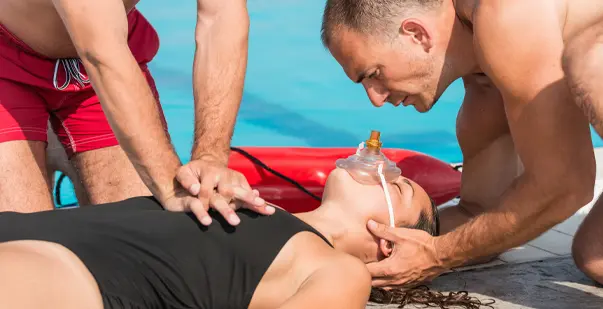
Last Updated on: July 4, 2024
Table of content(s)
Drowning is a critical emergency, and cardiopulmonary resuscitation is one of the most significant ways to make a life-or-death difference. Drowning takes place when water enters the lungs. This prevents oxygen from reaching the bloodstream, leading to respiratory failure. It might cause a potential cardiac arrest. Immediate cardiopulmonary resuscitation (CPR) can help circulate oxygenated blood until professional help arrives.
CPR for drowning follows the same principles as standard CPR. However, there are a few additional considerations, especially due to the nature of drowning. This involves clearing the airway of debris, initiating chest compressions to pump blood, and offering rescue breaths.
Knowing when and how to perform these can improve the chances of survival. This helps minimize long-term complications. Learn the techniques for CPR for drowning and act promptly during water-related emergencies.
What is the significance of timely CPR?
Timely cardiopulmonary resuscitation is crucial, as it increases the chances of survival for individuals experiencing cardiac arrest. Here are a few reasons why timely CPR is crucial:
Read More: What are the different levels of CPR certification training?
What are the signs of drowning?
Drowning is dangerous and an emergency that you must address. Look out for the signs to offer immediate help:
A drowning person can stay this way for 20–60 seconds. If you do not rescue them soon, they will start to sink.
How do you perform CPR on a drowning victim?
So if someone drowns you do CPR? Yes. Performing CPR is a critical skill that can save a life during an emergency. Drowning can lead to respiratory arrest and cardiac failure. Lack of oxygen is dangerous and makes immediate intervention a must. Learn how do you do CPR on someone who drowned:
These steps provide immediate and effective care.
Is CPR performed differently for victims of drowning?
This is a common question in the minds of many individuals. The most important thing to remember is that for anyone who is not breathing, you must start CPR right away.
Near-drowning happens when a person is unable to breathe. Just as with other respiratory-based issues, the body shuts down due to a lack of oxygen. This can result in brain damage. Even if a victim has been submerged in water for a long time, CPR may be effective. This is especially true when the water is cold.
Is online CPR legit?
Yes, online CPR is legit, and it is approved by all organizations. It is important to enroll with a reputed course provider. To ensure this, here are a few key points to consider:
Read more: Implications of CPR: Can You Get Sued for Performing CPR?
Conclusion
Performing CPR on a drowning victim is critical for their survival. Assess the situation and ensure that it is safe for you and the individual. Only then can we start administering CPR for drowning. Begin compressions and rescue breaths to improve the recovery chances. Prompt intervention makes a difference, especially during emergencies such as drowning. Remember, every second counts, so act before it is too late.